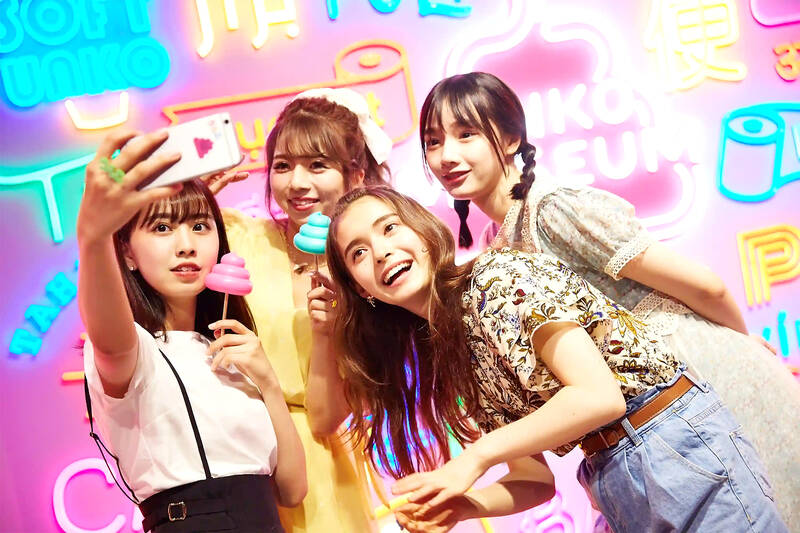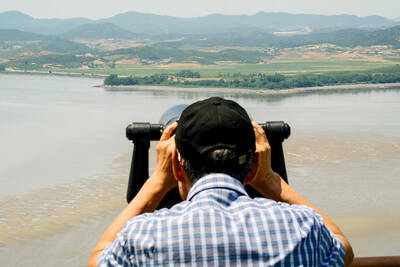As a mildly lactose-intolerant heavy lactose consumer with an anxiety disorder and an affinity for coffee, I am very familiar with the idea of poop being urgent.
But I’m struck by a different sense of urgency at Melbourne’s new Unko Museum, an immersive exhibit that opened this month to celebrate “adorable poop.” As I sit down for a poop tea party, browse the shelves of a poop supermarket and pat a furry poop creature named Jenny, I find myself considering the importance of excrement — and our relationship with it.
Located across the road from where Melbourne’s first public toilet opened in 1859, Australia’s first Unko Museum is the latest in a series that has cropped up across Japan and Shanghai over the past five years (unko is one of the sweeter Japanese words for faeces, along the lines of “doo-doo”). With entry priced at US$23.50 (or US$18 per child if you’re dropping off the kids), it’s mostly a bunch of Instagrammable set pieces, plus a few crappy games (their words, not mine).

Photo courtesy of the Unko Museum
The faeces featured here — piled in a play pit, dangling from the ceiling, glowing menacingly in a dark, mirrored corridor — is the Platonic ideal of poop: the iconic soft-serve shape that transcends even the Bristol stool scale’s coveted yet elusive Type 4 (“like a sausage or snake, smooth and soft”).
Masaru Kobayashi, director of T Museum, the company behind Unko Museum, cites Euclid’s golden ratio and the tiered pagodas of Kyoto temples when discussing the shape’s appeal.
He traces the origin of the sanitized version back to Akira Toriyama’s 1980s manga series Dr. Slump, in which an android girl grapples with an uncontrollable urge to poke poops with sticks and eventually encounters a host of lovable sentient poops.
“For Japanese people, it is an ordinary thing to enjoy as a kind of entertainment,” Kobayashi says. This is in no small part due to Japan’s kawaii aesthetic, which manages to make even “very dirty stinky things” endearing.
“You can find something kawaii in anything,” he says.
He also points to the central role played by agriculture in Japan — the importance of “poop as a fertilizer” may have helped destigmatize it. But more than half of Australia’s land use is dedicated to agriculture too, and here we mostly tend to just ignore the stuff — or obsess about it in unhealthy ways.
In a way it’s fitting that Unko Museum has cut rope in a city once referred to as “Smellbourne,” so named in the 19th century for its refusal to take care of business with a proper sewerage system; and in a country that became so obsessed with the idea of a politician soiling himself at McDonald’s that the then prime minister Scott Morrison had to go on FM radio to deny it.
There’s no such taboo at the Unko Museum. In one installation, visitors are encouraged to stomp on colored turds to rack up points for a game. In another, a trio of children shout “poo!” into a microphone to make one glow on a screen. The real toilets may be tucked away at the back, but there are many more on proud display — some of which, if you sit on them and pretend to squeeze, reward you with a plastic rendering of your efforts. Kids are delighted and adults exchange knowing smirks, as they tentatively prod the odd turd or two. A couple sit on side-by-side toilets and pose for a romantic snap.
It’s a silly place to spend an afternoon, but you can take anything seriously if you want to, and clearly I do. For the 38 percent of Australians who have experienced incontinence, stigma contributes to a majority not contacting a health professional, and almost a third report that incontinence affects their mental health. For the one in five children who struggle with stool toilet training, one study showed that simple praise can help. So imagine what could be achieved by an entire room applauding as you pretend to squeeze one out and win a toy?
Researchers are now exploring how a more literal acceptance of feces — in the form of fecal transplants — could help treat everything from gastrointestinal disorders to cancer. In fact Australia became one of the first countries in the world to give the procedure regulatory approval in 2022.
More than our physical health is at stake. In his 2023 book Eat, Poop, Die: How Animals Make Our World, the conservation biologist Joe Roman advances animal excrement as a tool for tackling the climate crisis. As he recounts his more than 20 years spent collecting whale feces, Roman makes Unko Museum’s vivid displays of color seem less outlandish.
“Whale fecal plumes can be neon green or bright red,” he writes, adding, with poetic flourish, that “at times, they sparkle with scales, like the sun glinting on the water.”
More than just a pretty face, whale scat feeds other organisms and captures carbon from the ocean’s surface — one of the many different roles played by many different animals in answering nature’s call to repair ecosystems, cool the planet and sustain life.
You won’t find any of these facts at Unko Museum; you’ll have better luck with Australia’s other poo museum, the Pooseum, which is in Richmond, Tasmania and promises “education about defecation” — an info dump with more of a scientific bent.
But if you’re after a fun, breezy 30-minute chance to goof around and take a few photos, Unko Museum is worth a visit. I wouldn’t be busting — but if you gotta go, you should.

In the next few months tough decisions will need to be made by the Taiwan People’s Party (TPP) and their pan-blue allies in the Chinese Nationalist Party (KMT). It will reveal just how real their alliance is with actual power at stake. Party founder Ko Wen-je (柯文哲) faced these tough questions, which we explored in part one of this series, “Ko Wen-je, the KMT’s prickly ally,” (Aug. 16, page 12). Ko was open to cooperation, but on his terms. He openly fretted about being “swallowed up” by the KMT, and was keenly aware of the experience of the People’s First Party

Aug. 25 to Aug. 31 Although Mr. Lin (林) had been married to his Japanese wife for a decade, their union was never legally recognized — and even their daughter was officially deemed illegitimate. During the first half of Japanese rule in Taiwan, only marriages between Japanese men and Taiwanese women were valid, unless the Taiwanese husband formally joined a Japanese household. In 1920, Lin took his frustrations directly to the Ministry of Home Affairs: “Since Japan took possession of Taiwan, we have obeyed the government’s directives and committed ourselves to breaking old Qing-era customs. Yet ... our marriages remain unrecognized,

During the Metal Ages, prior to the arrival of the Dutch and Chinese, a great shift took place in indigenous material culture. Glass and agate beads, introduced after 400BC, completely replaced Taiwanese nephrite (jade) as the ornamental materials of choice, anthropologist Liu Jiun-Yu (劉俊昱) of the University of Washington wrote in a 2023 article. He added of the island’s modern indigenous peoples: “They are the descendants of prehistoric Formosans but have no nephrite-using cultures.” Moderns squint at that dynamic era of trade and cultural change through the mutually supporting lenses of later settler-colonialism and imperial power, which treated the indigenous as

Standing on top of a small mountain, Kim Seung-ho gazes out over an expanse of paddy fields glowing in their autumn gold, the ripening grains swaying gently in the wind. In the distance, North Korea stretches beyond the horizon. “It’s so peaceful,” says the director of the DMZ Ecology Research Institute. “Over there, it used to be an artillery range, but since they stopped firing, the nature has become so beautiful.” The land before him is the demilitarized zone, or DMZ, a strip of land that runs across the Korean peninsula, dividing North and South Korea roughly along the 38th parallel north. This